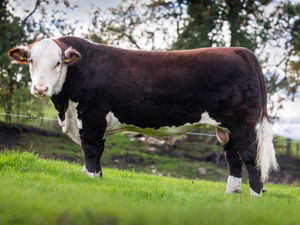Shropshire farmers resolute in face of drought fear
Michael Bubb well remembers the droughts of 1975 and 1976.
Michael Bubb well remembers the droughts of 1975 and 1976.
And although weather forecasters predict Shropshire could again go into drought this year, the county farmer is not panicking.
"It's a very unusual situation," he says, while in one of his fields at Pave Lane, near Newport, where he grows potatoes, flowers, wheat and oilseed rape.
"It's probably the most unusual in 40 years of farming."
This week the Environment Agency said the county was at 'high risk' of being declared a drought area later in the year because of continuing low rainfall.
But, if there's one thing Mr Bubb has learned over his time in the industry, it's this: "As soon as you're sure that something is going to happen it doesn't always happen."
Water levels in his streams are 'exceptionally low', he says, and the subsoil, the two-and-a-half feet of earth that holds moisture below the topsoil, is drier than it should be for this time of year.
This could have a big effect on crops. Potatoes, for example, have roots which can grow three feet down.
But two or three inches of rain in April, and a few inches in May, June and July would make all the difference to restoring the moisture level, he says.
That's a lot of water, an inch of rain is equal to 22,000 gallons, but its nowhere near the amount that would be needed if supplies of drinking water were affected.
At present, though, we are talking only about how the predicted drought could affect Shropshire's farmers.
According to the National Farmers' Union, agriculture and horticulture account for about one per cent of water use. Households use 40 per cent, electricity production takes up 43 per cent, and the remainder is used by industry.
Mr Bubb has boreholes to draw water from the ground and reservoirs and those reservoirs are full.
Mr Bubb adds: "1975/76 were amazing. But on September 20, 1976 it started to rain and it did not stop until late November."
Meanwhile, his natural confetti flower crop is doing perfectly well. "Rest assured there will not be a shortage of confetti," he adds. "Brides can relax."
And so can strawberry buyers – at least that's the view of south Shropshire fruit farmer Michael Bowden.
He grows strawberries and raspberries at Kirkenel Orchards, near Ludlow, on fields the size of 80 football pitches.
He says a drought 'should not really affect us too much because we have got quite heavy soil'.
This soil will hold in the moisture as will the plastic bedding put down around the strawberries.
Mr Bowden uses trickle irrigation, which means the fruit is only given the amount of water it needs, rather than having it sprayed on.
"Obviously we monitor the water very carefully," he says. "We're very efficient in our water usage."
But, he adds: "It's quite a concern. We cannot just go and plant an extra 10 acres. Water is the biggest limiting factor at the moment."
Not all farmers take their water from the ground. Paul Dutton, of Calverhall, near Whitchurch, uses the mains supply to look after his comparatively small herd of 110 cows, which is cleaner than water from the ground or reservoirs.
Each cow produces 30 litres of milk each day, but needs about 150 litres of water, that's 64,000 litres a year for each cow, or five million litres for the herd, bringing an annual water bill of about £5,000.
"It's a lot of money but we have got to have water for the livestock and we don't use natural water sources such as ponds because of the health risk there with contamination," he added.
A drought could see restrictions placed on his supply, he said.
"I am concerned. We have got to plan as much as we can," he added.
Arthur Hill, who has 2,000 acres at Walton Grange Farm, near Much Wenlock, does not irrigate his land and depends entirely on what comes out of the clouds for his cereals, beef and sheep.
But last year he got 69 per cent of his normal average rainfall, 19ins compared to the usual 30ins, and so far in 2012 he's had only about 3ins.
Mr Hill also has an interest in a farm in north Shropshire. It usually receives between 26 and 28ins of rain annually but last year it had about 15.5ins.
He also recalls the summer of 1976, and remembers that the intense rain that followed the long dry spell created problems for planting crops.
But, in the meantime all he can do is wait to see what the weather brings.





